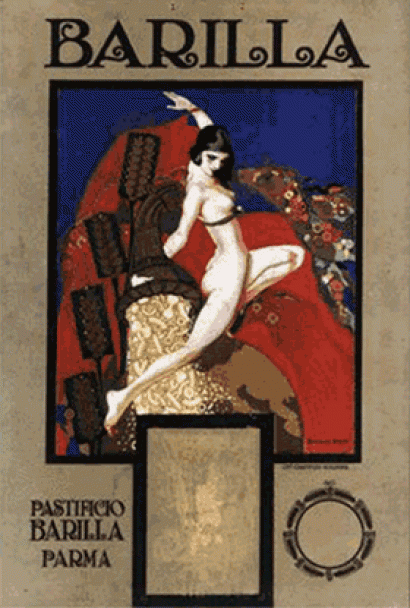1923 – The gold of Semèle

Definitely less oriented to graphic design and more towards pictorial style in comparison to that of the previous year, the daily calendar of 1923, was designed by Emma Bonazzi to resemble a precious icon. The versatile artist from Bologna, who also dealt with advertisement for Perugina undersigning drafts and boxes of great elegance and refinement, proposed for Barilla pasta – which was not a luxury product – a cultured exaltation in the vibrant style of Klimt. The 1922 and 1923 calendars are connected, besides from the logo of Chappuis of Bologna, only by the typeset of the lettering that formed the name Barilla: in both cases the Art Noveau flourishing was made more rigid by the tense and dry morphology of Déco taste.
In a decisive Déco style, the “garçonne” (young lady) who is the protagonist of the painting perhaps represents the goddess Ceres giving life to the universe, perhaps a sensual and agile Semèle, a goddess that even in the etymology of the name reminds of the raw materials of the pasta factory – the “semolina” (ground wheat).
Therefore this symbolic presence is an allegorical image of fortune and abundance, and is sided with the attribute of a cornucopia overflowing with gold. It’s the gold of pasta in a flowing array of innumerable shapes inundating the land below in a symmetrical correspondence with the cascade of flowers in the background; these are mostly roses, the essence that was preferred above all in the style that had its consecration at the 1925 Paris Expo.
Emma Bonazzi spoke the language of Klimt and adopted the stylistic syntax of the Viennese Secession that had already inspired the cycle of paintings by Amedeo Bocchi in Parma in 1915 dedicated to work and abundance, painted as a fresco in the Council Room of the Cassa di Risparmio bank.